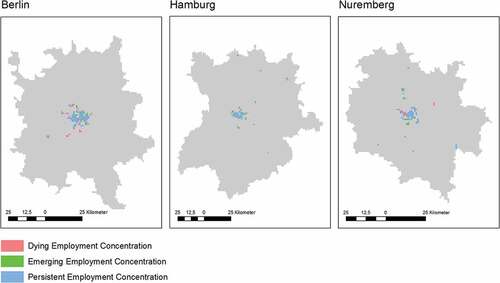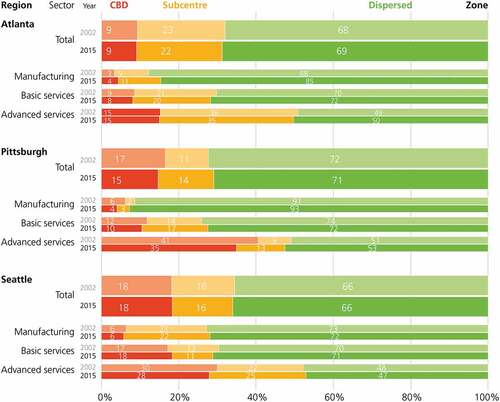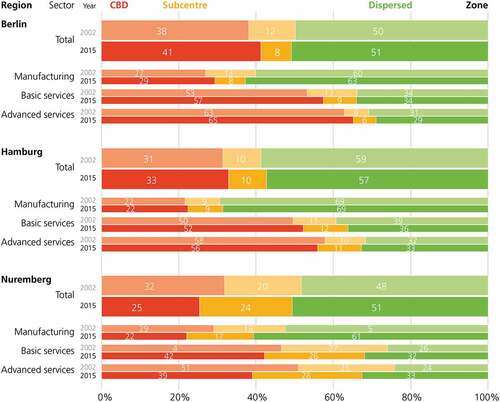Figures & data
Table 1. Descriptive statistics for U.S. and German case study regions 2002, 2015.
Figure 1. Employment concentrations in U.S. city regions 2002, 2015. Notes: Delineation of case study regions based on 60-minute travel time isochrones (Atlanta, Seattle) or 45 minutes (Pittsburgh), given a free-flow road network. Source: Own calculations.

Figure 2. Employment concentrations in German city regions 2002, 2015. Notes: Delineation of case study regions based on 60-minute travel time isochrones (Berlin, Hamburg) or 45 minutes (Nuremberg), given a free-flow road network. Source: Own calculations.

Table 2. Descriptive statistics of employment concentrations in U.S. and German city regions 2002, 2015.
Table 3. Size distribution of employment concentrations in U.S. and German city regions 2002, 2015.


